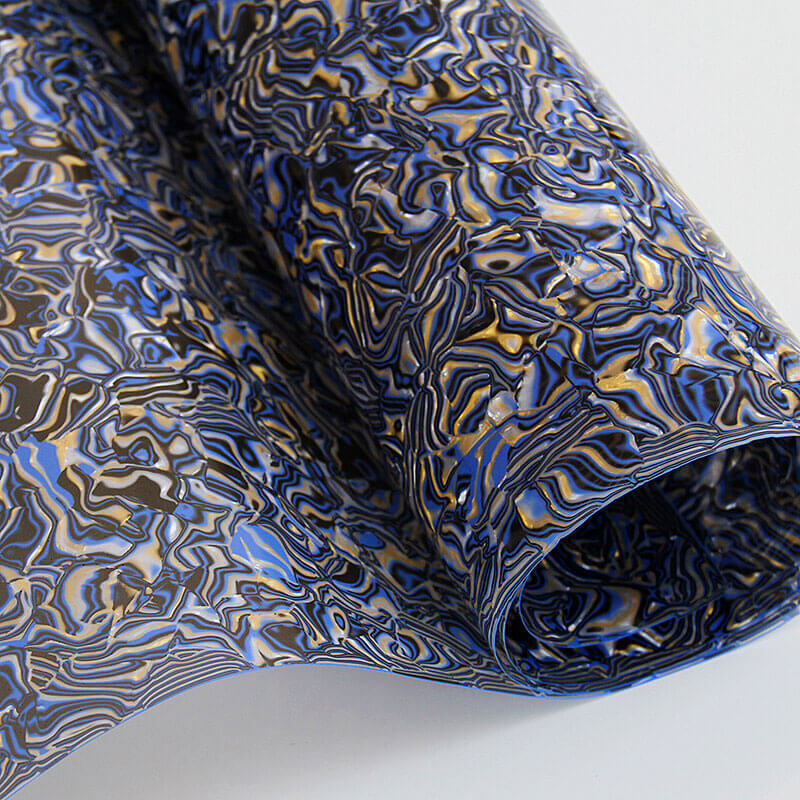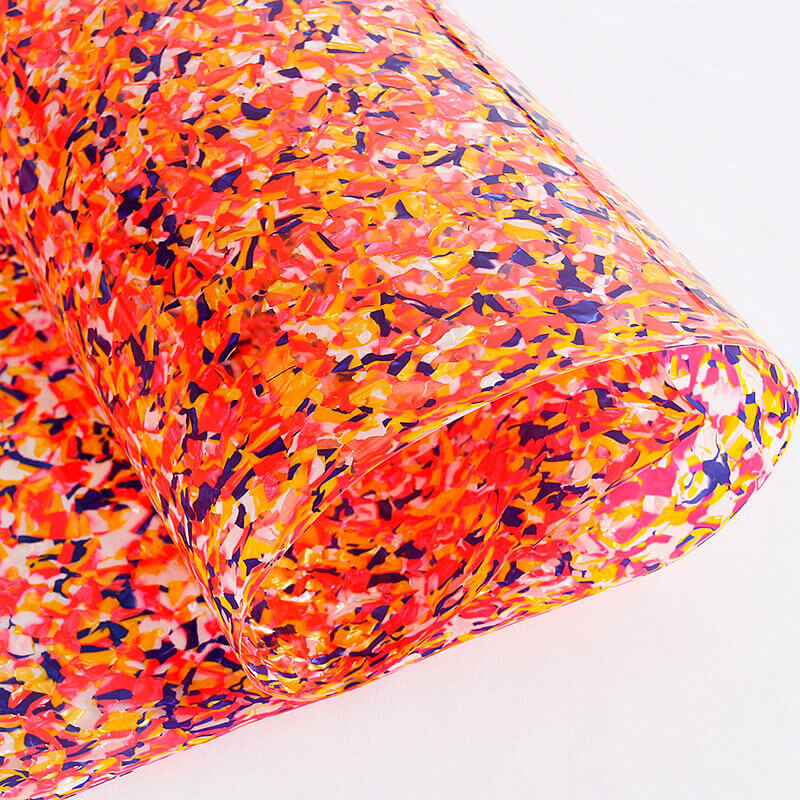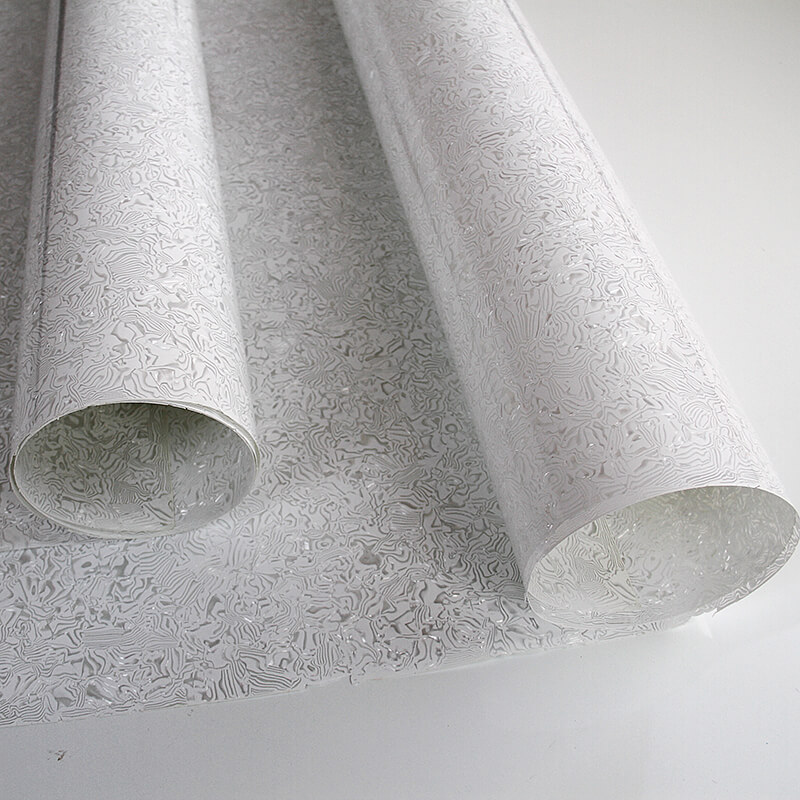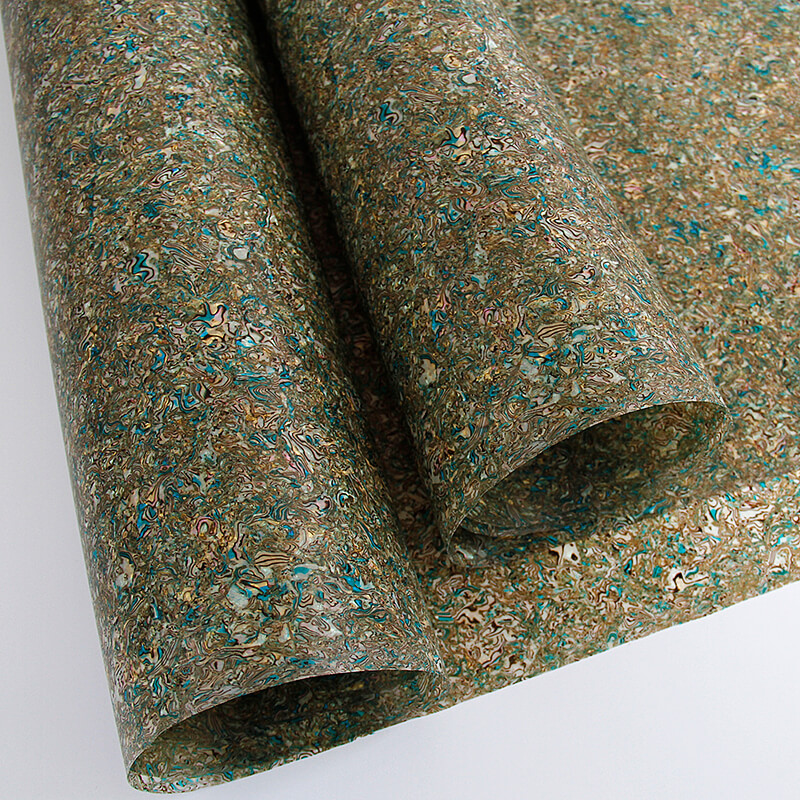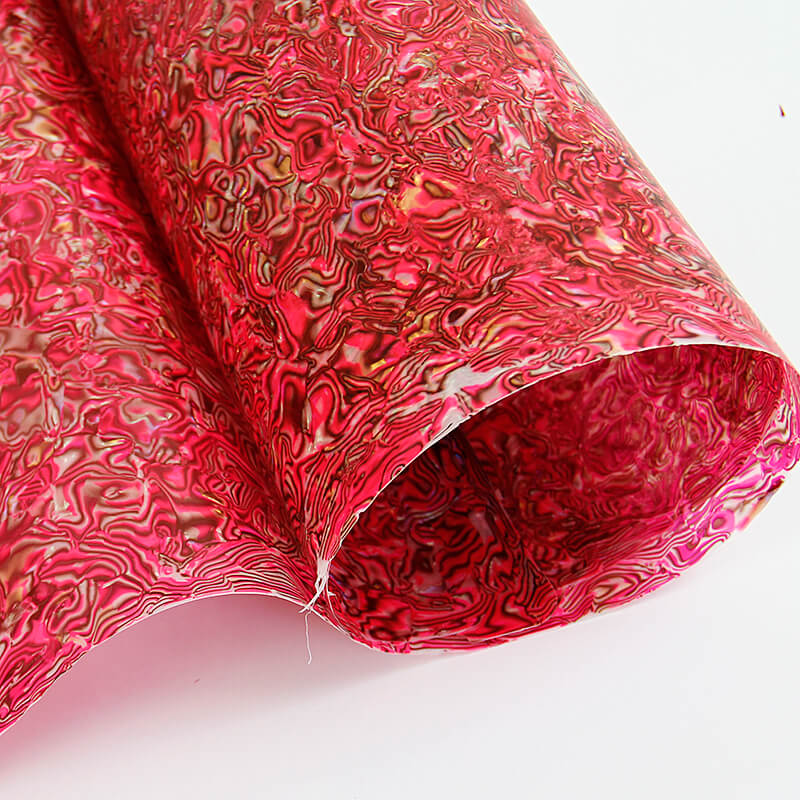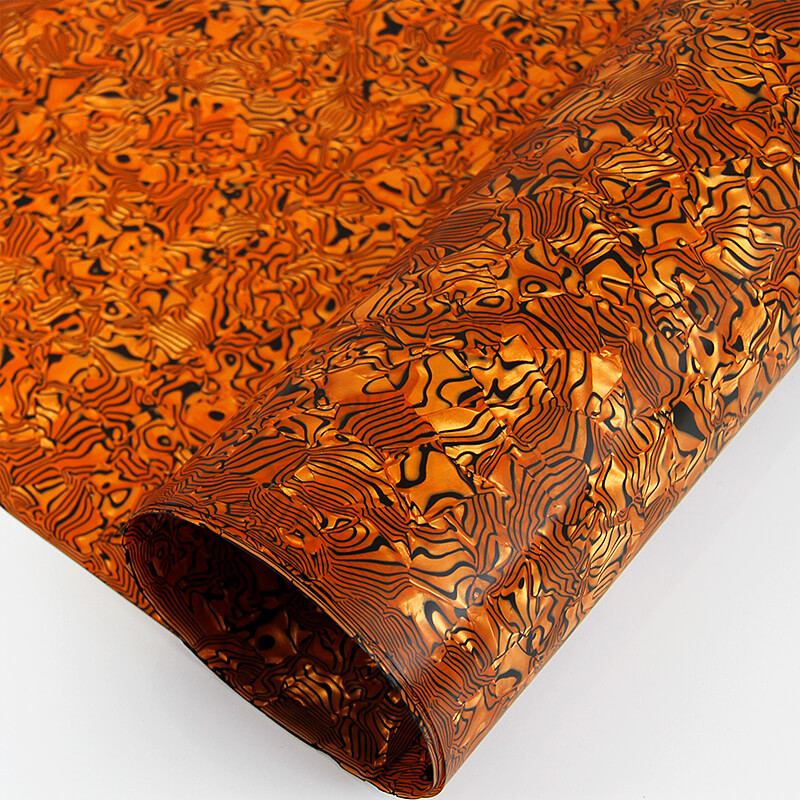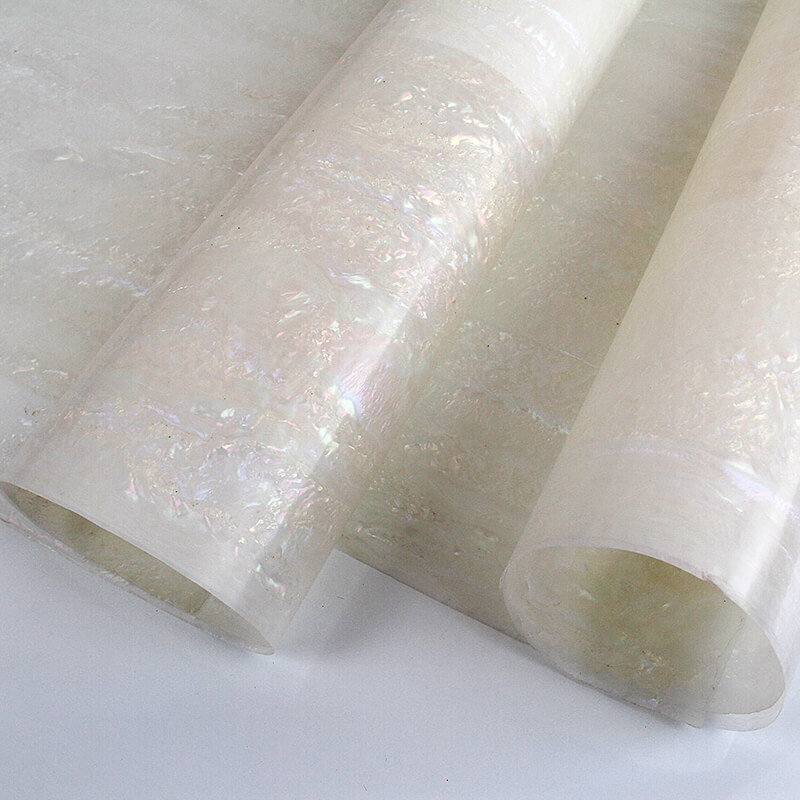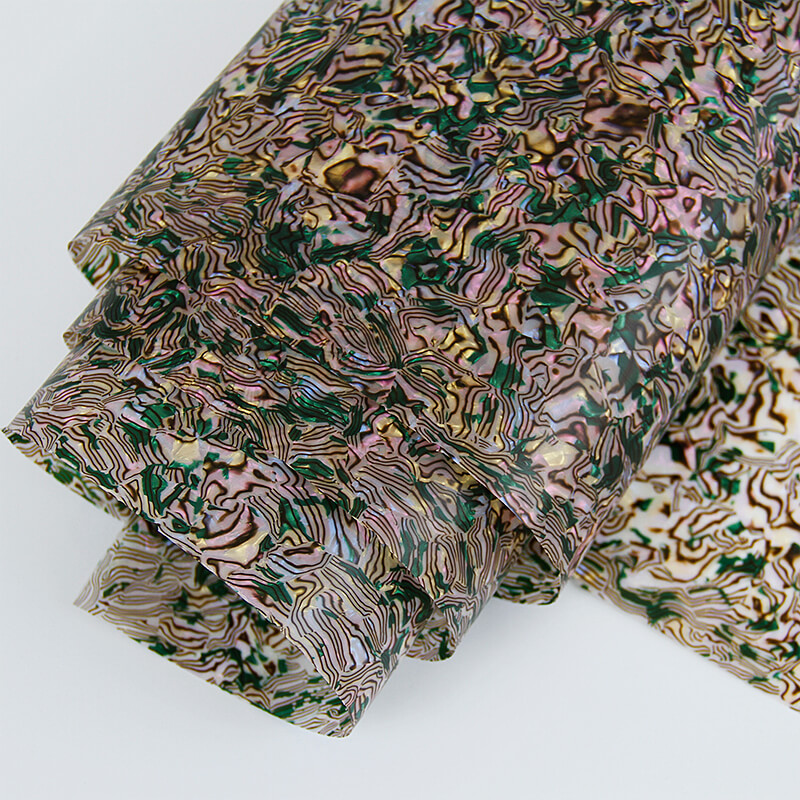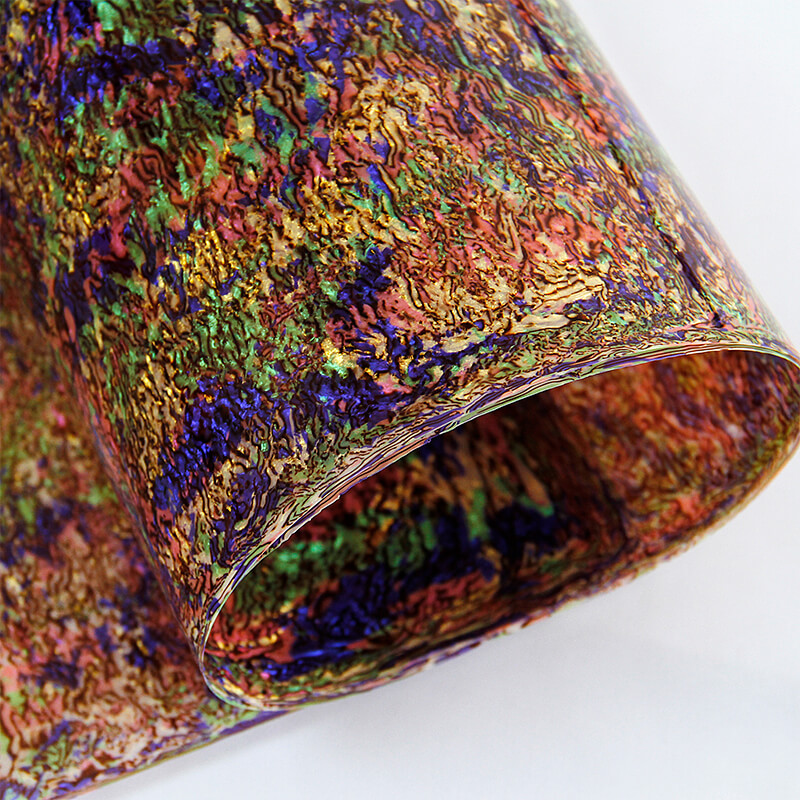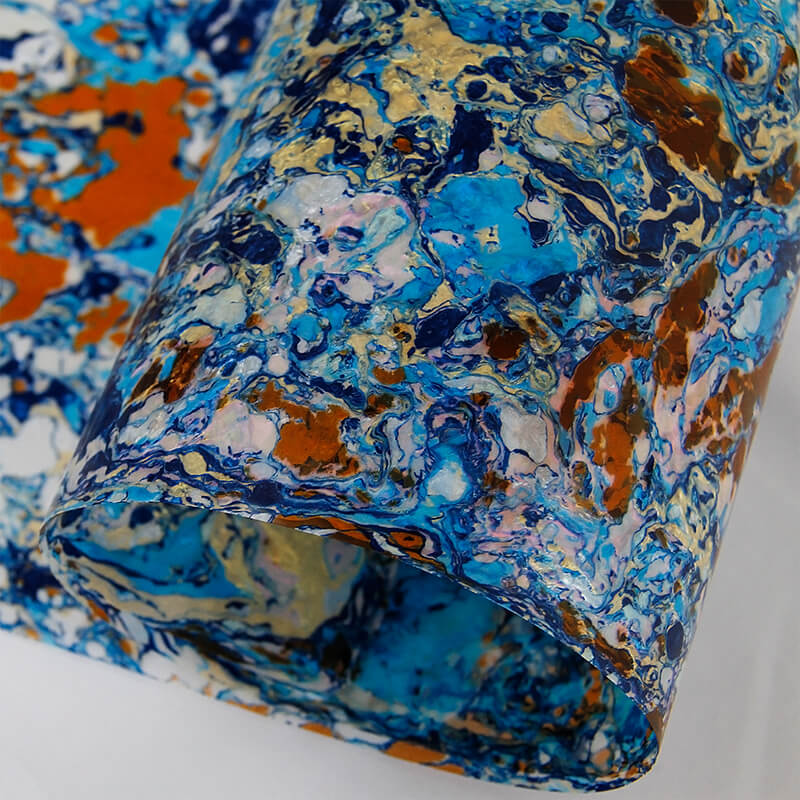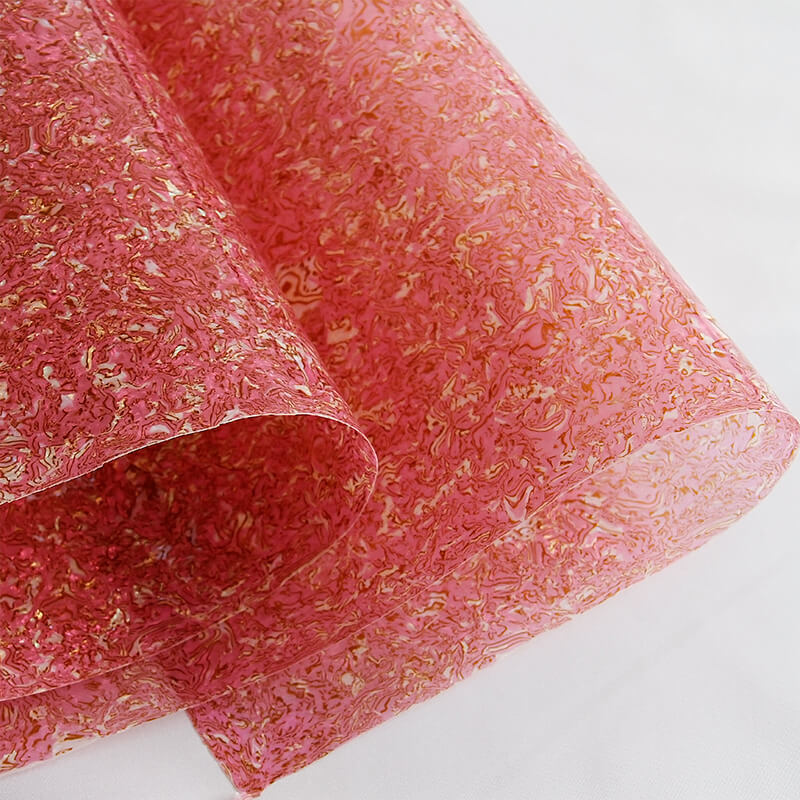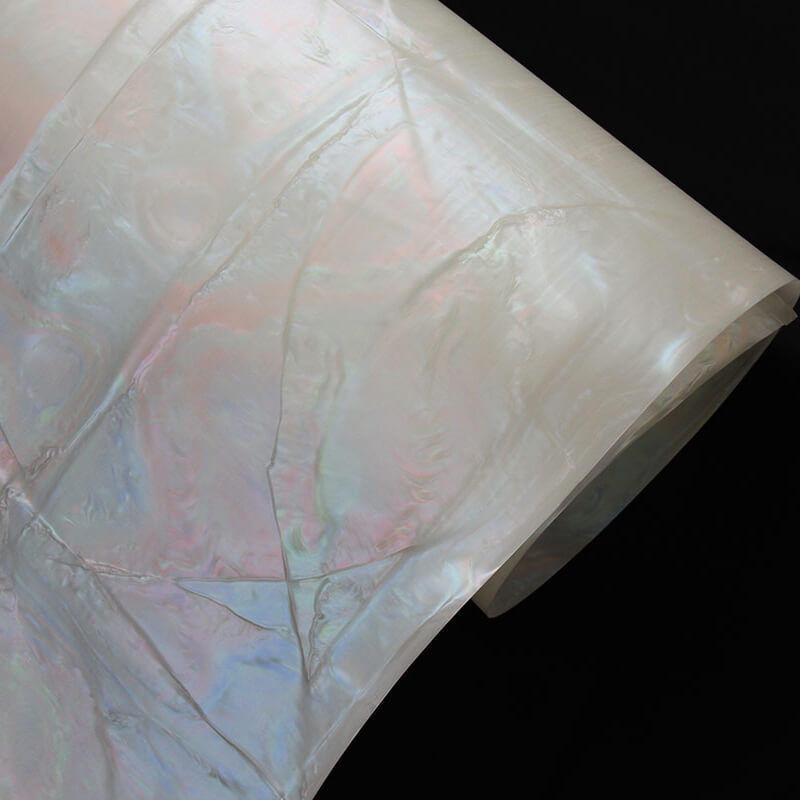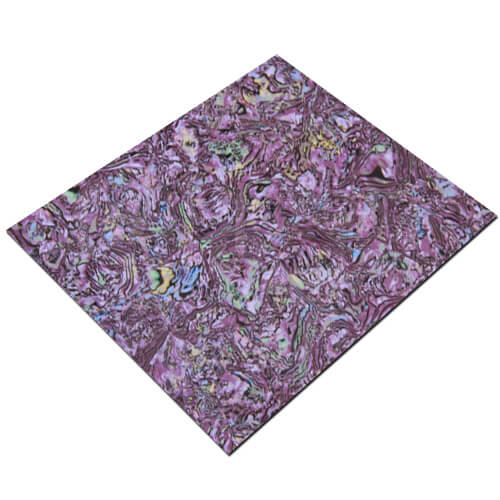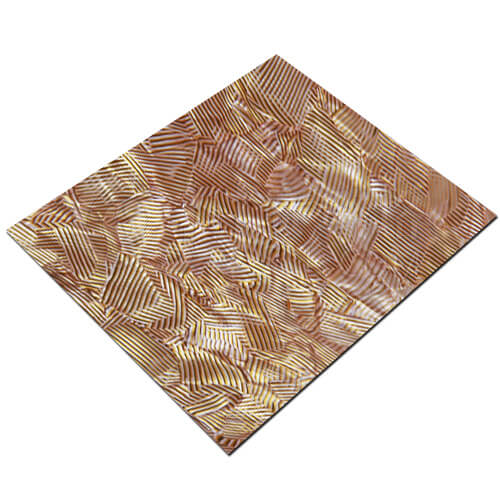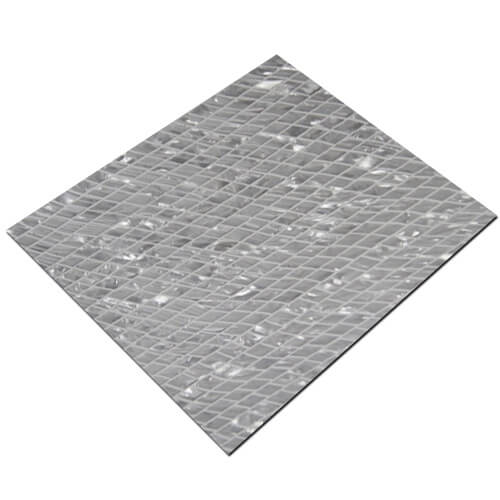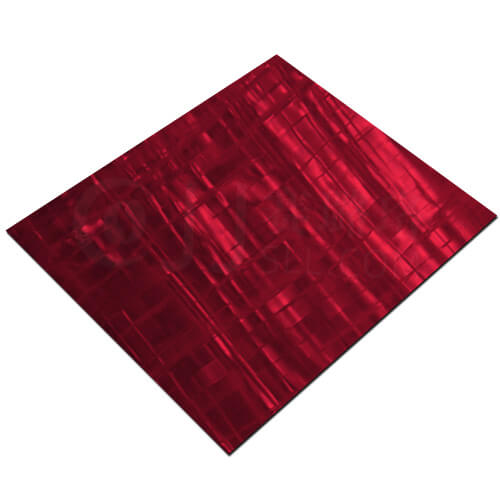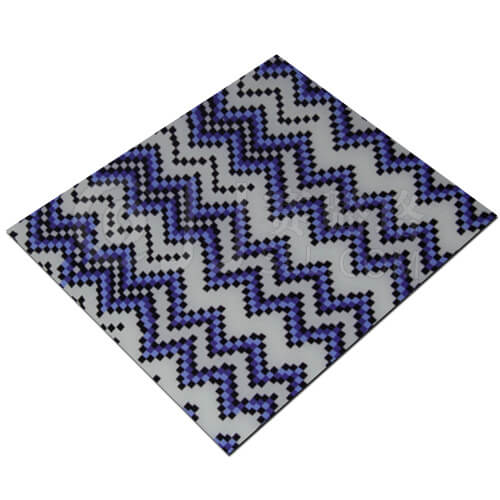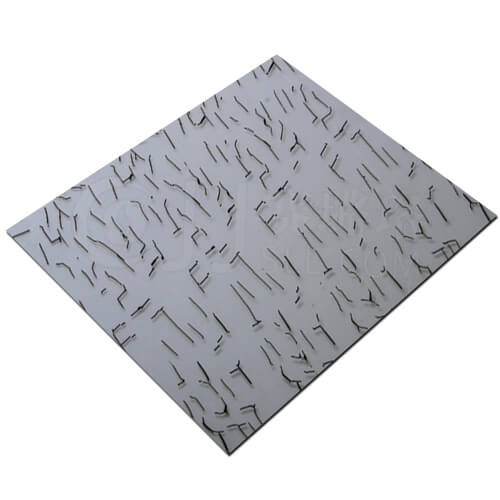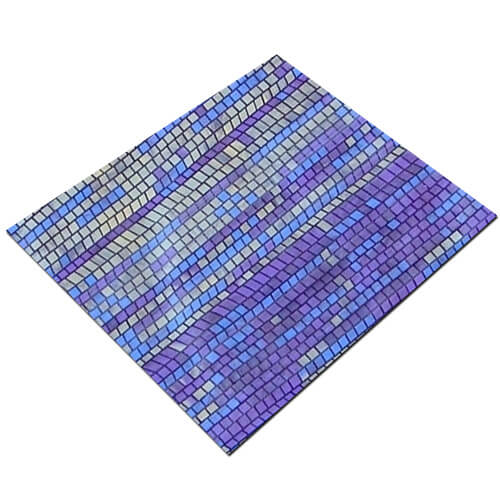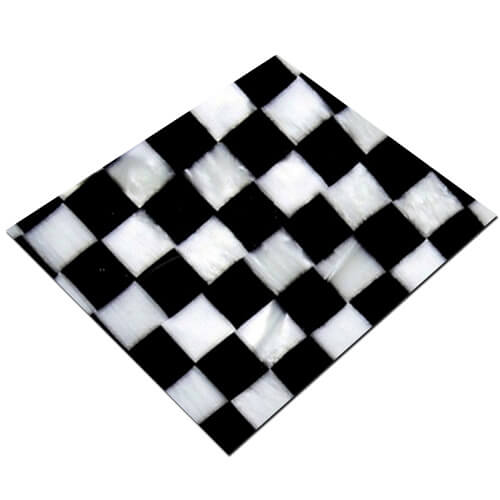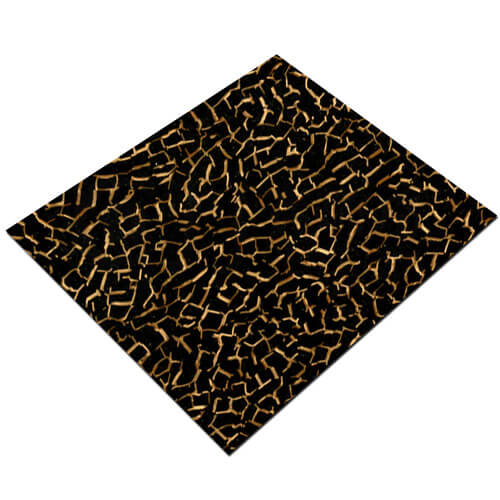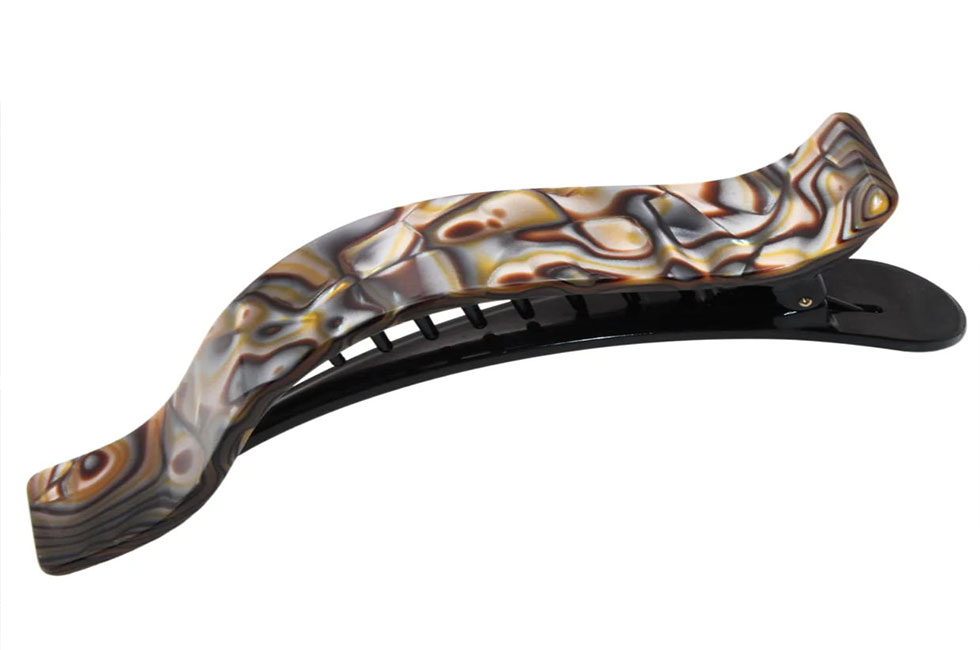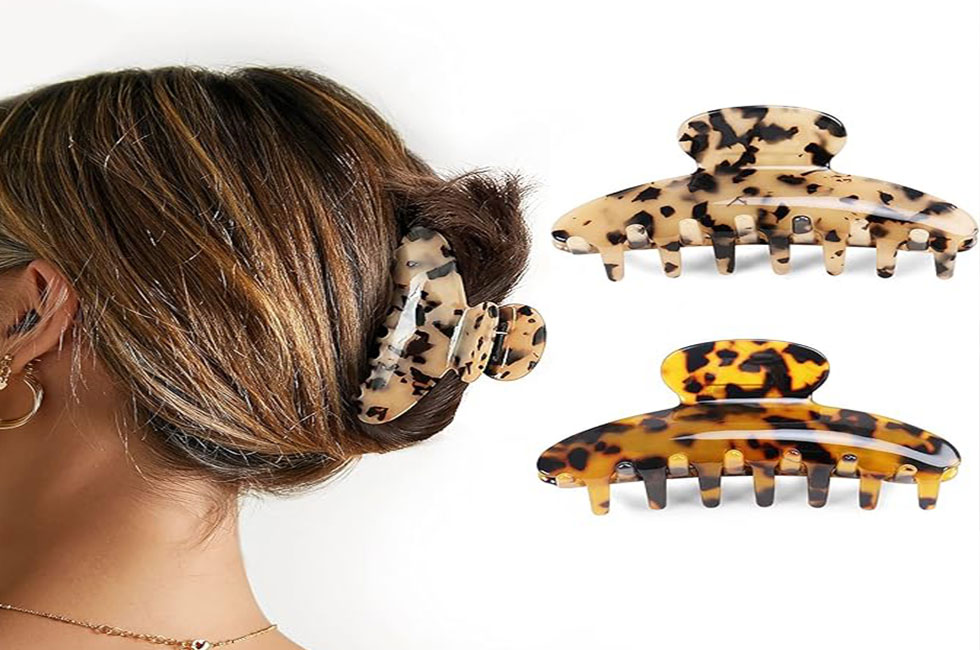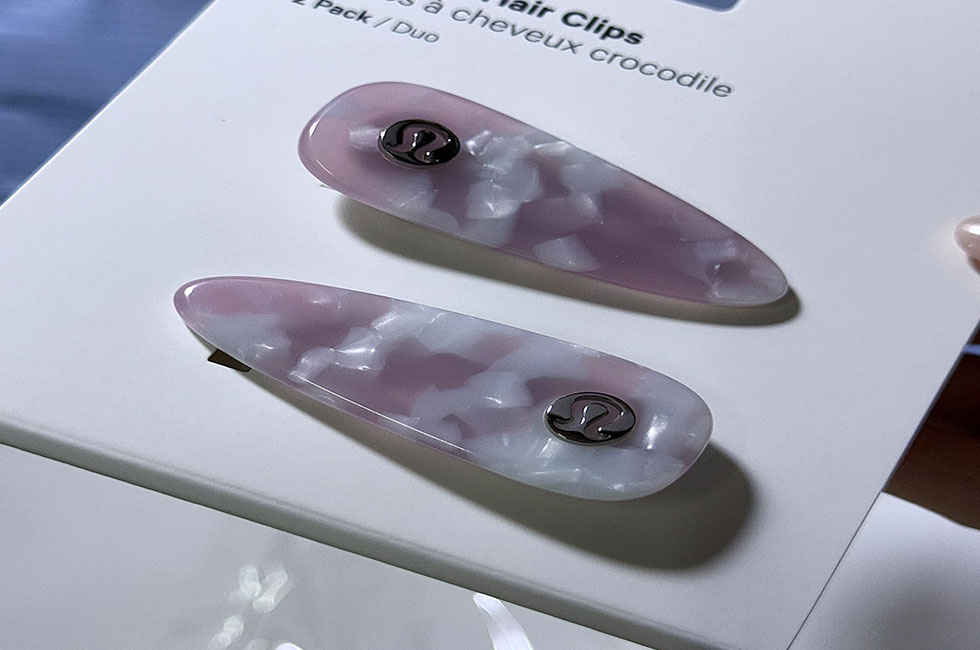Shell Marble Celluloid Sheet
What is Shell Marble Celluloid Sheet ?
Shell marble celluloid sheet is a celluloid sheet material with a shell texture and glossy effect. Shell marble celluloid sheet is created by adding specific pigments and additives to the celluloid material, or by using a special process, to create a shell-like texture. This texture may mimic the patterns of natural shells, such as stripes, spots, or irregular patterns, while also displaying the unique pearlescent luster of shells.
Production Process
Raw Material Mixing: Nitrocellulose, camphor, lubricants, and dyes are mixed in a specific proportion and thoroughly stirred and kneaded to form a uniform celluloid colloid.
Pearlescent Pigment Addition: An appropriate amount of pearlescent pigment is added to the celluloid colloid and continued stirring to ensure uniform distribution.
Molding: The mixed celluloid colloid containing pearlescent pigment is formed into a film of a desired thickness and width through processes such as calendaring, extrusion, or casting. Performance Characteristics
Appearance: Features a unique pearlescent luster that reflects and refracts light, creating a vibrant and colorful visual effect, reminiscent of natural materials like pearls and shells.
Flexibility: Due to the inherent properties of celluloid, pearlescent celluloid film exhibits excellent flexibility and elasticity, allowing it to bend and twist to a certain extent without breaking, making it suitable for applications requiring bending
Features
- Prominent bionic texture.
- Unique luster.
- Rich and natural color.
- Moderate thickness.
- Easy to process.
Options
- Custom Textures: Customizable shell and marble textures.
- Custom Colors: Choose from a variety of colors, including creamy white, light pink, light blue, and beige.
- Custom Thickness: Typical celluloid sheet thicknesses range from 0.17mm to 5.0mm.
- Custom Sizes: Customizable sizes and specifications based on specific application scenarios.
- Custom Finishes: Customizable finishes include matte and gloss finishes.
Application
Jewelry: It can be used to create pendants and beads for necklaces and bracelets, as well as earrings and hairpins. Its unique shell texture and luster add a natural beauty and sophistication to any piece, making it even more appealing.
Clothing: It can be cut into various shapes and used as decorative elements on clothing, such as collars, cuffs, and hems, to enhance the fashion sense and uniqueness of clothing. It is particularly suitable for retro or marine-themed clothing. It can also be made into accessories such as belts and bows to enhance the overall look.
Home Decoration: It can be used to veneer furniture, such as wardrobes, desks, and coffee tables. By applying shell marble celluloid film, furniture can be imbued with a shell and marble-like texture, adding an elegant ambiance. It can also be used to decorate photo frames and mirror frames, imparting a unique texture and luster, making them exquisite home accessories.
Stationery: It can be used to create notebook covers, bookmarks, and other stationery, adding a beautiful and artistic touch to stationery, providing a unique user experience.
Crafts: It is an ideal material for crafting a variety of crafts, such as decorative ornaments and small sculptures. Through carving and polishing, it can create textures reminiscent of shells and marble, enhancing the artistic value and aesthetic appeal of the crafts.
Selection Shell Marble Celluloid Sheet Series
Main Parameter
Material: Celluloid (Nitrocellulose)
Thickness: 0.17mm to 5.0mm (selectable based on user needs)
Dimensions: 1600 x 700mm, 1400 x 700mm, 1500 x 900mm
1. Daily Cleaning: Be gentle and avoid irritation.
Basic Cleaning Tools:
Preferably use a soft, slightly damp cloth (such as a glasses cloth or microfiber cloth). Avoid using rough cloths (such as steel wool or scouring pads) to prevent scratching the surface texture or gloss.
For cleaning, choose a neutral detergent (such as baby shower gel or neutral dishwashing liquid, diluted before use) or simply use water. Avoid using acidic (such as white vinegar or toilet cleaner), alkaline (such as baking soda or soapy water), or detergents containing alcohol or solvents (such as gasoline or nail polish remover). These can corrode the celluloid surface, causing discoloration and cracking. Cleaning Instructions:
Gently dust the surface with a dry cloth (avoid static electricity caused by dry rubbing, which attracts more dust).
Damp a damp cloth in a small amount of neutral detergent, wring it out until partially dry, and then gently wipe the stain. (For localized stains, only wipe the affected area; there’s no need to soak the entire surface.)
Immediately blot any remaining moisture with another clean, dry cloth, ensuring the surface is completely dry. (To prevent prolonged moisture penetration and warping of the film, this is essential.)
II. Special Stains: Targeted Treatment, Avoid Brutal Force
Grease Stains/Fingerprints: Use a slightly damp cloth dipped in diluted neutral detergent and gently rub in circular motions. Dry immediately. Do not use alcohol or degreasers.
Paint/Handwriting: For water-soluble paints (such as watercolor), simply wipe with clean water. For stubborn stains like oil-based markers, gently rub with an eraser (soft art eraser) before cleaning with a damp cloth. Do not use stain removers or banana oil, as they will dissolve the celluloid surface. Glue residue: Dip a cotton swab in a small amount of warm water and hold it on the glue for 10-15 seconds to soften the glue. Then use an eraser or soft cloth to gently peel it off. Do not scrape it with a blade (it may damage the surface).
1. Highly realistic appearance and flexible style
Highly realistic natural texture reproduction: It accurately mimics the pearlescent luster and fine lines of natural shells, as well as the veining and gradient effects of marble, visually comparable to natural materials but at a lower cost. For example, the iridescent luster of shell texture and the ink-wash effect of marble can be achieved through process adjustments, resulting in a more uniform texture distribution than natural stone, more in line with design requirements.
Highly adaptable to styles: Customizable to create a variety of styles, including retro, marine, light luxury, and minimalist, with flexible adjustments to color, texture, and gloss (matte/gloss). In contrast, the texture of natural stone is uncontrollable, and metal decoration styles are relatively monotonous (mostly industrial or luxury). 2. Lightweight Material, Easy Processing
Weight Advantage: Celluloid film has a low density (approximately 1.3-1.4g/cm³), significantly lighter than natural stone (e.g., marble, approximately 2.7g/cm³) and sheet metal (e.g., copper, approximately 8.9g/cm³). This makes it suitable for weight-sensitive applications, such as jewelry, clothing embellishments, and hanging home accessories, reducing load-bearing stress and improving safety.
Easy Processing: Celluloid film can be formed into any shape (round, irregular, curved, etc.) through simple processes like cutting, stamping, bending, and gluing, and its edge treatment resists chipping. Natural stone, on the other hand, is difficult to cut and prone to breakage, while sheet metal requires specialized equipment for welding or bending. Fabrics are prone to deformation and are difficult to shape.
3. Controllable Cost, Better Value
Low Raw Material Cost: Compared to natural shells (which are expensive due to their scarcity) and natural marble (which has high mining and transportation costs), celluloid film, made primarily from cellulose nitrate, offers lower unit costs in mass production. Reduce additional costs: There is no need to pay high mining, processing and transportation fees like natural stone, nor is there a need for complex surface anti-corrosion treatment like metal decoration, and the processing loss rate is low (about 5%-10%, much lower than the 20%-30% of stone).
1. Clarify core requirements to avoid mismatching function and application
Clearly define the intended use: First, clearly define the film’s end-use application (e.g., jewelry, clothing decoration, home veneer, etc.), as different applications have significantly different requirements for material thickness, toughness, and weather resistance. For example:
Clothing decoration requires flexibility and lightness to avoid excessive thickness that may cause discomfort;
Home veneer requires consideration of wear and temperature resistance, and it is necessary to determine whether additional coating reinforcement is required.
2. Focus on material properties and process limitations
Process feasibility assessment:
Texture complexity: Excessively fine textures (e.g., nano-scale lines) may exceed the limits of the embossing process. Confirm with the supplier whether the mold precision is compatible. It is recommended to first test the texture reproduction using a sample.
Size limitations: Large films (e.g., over 1 meter wide) may exhibit splicing artifacts. Confirm whether seamless splicing or reasonable seams are acceptable. For small, custom-shaped cuts (e.g., complex curves), confirm tool precision to avoid edge burrs. Surface treatment compatibility: If both “high gloss + wear resistance” are required, it is necessary to confirm whether the coating processes conflict (some wear-resistant coatings may reduce gloss). It is recommended to give priority to suppliers with mature composite processes.

